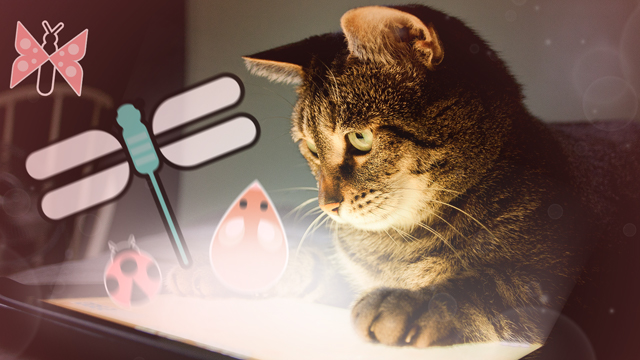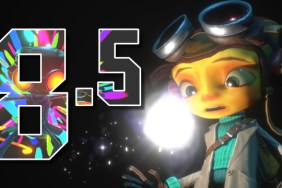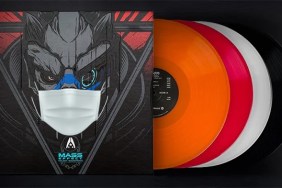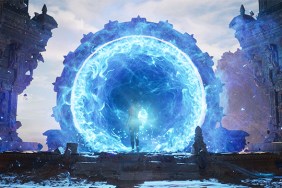Cats may be a lot of things — silly, adorable, downright evil — but they usually aren’t considered as a means for educating people or influencing game design. These apathetic, lazy furballs seemingly have little to do with game design as they don’t have opposable thumbs or a decent attention span. But Willem Delventhal, founder and CEO of Mew and Me, argues that building experiences for cats can actually sharpen development skills and teach people how to better develop more standard games.
You read that correctly. Developer Mew and Me create mobile games for cats and tracks how they play. Cats (probably) aren’t going to be starting their own Let’s Play YouTube channels anytime soon, but it’s unique market that, say, Blizzard isn’t exactly hitting. And even though it may not seem like it, developing games for cats opened Delventhal up to see ways to solve problems that can be applied to more traditional, less hairy audiences.
Communication is key for developers as everyone involved must speak or email in order to collaborate and get things done. Talking to one another is important but it is only one quadrant of the process called empathy mapping. Empathy mapping charts out what an individual user says, thinks, does, and feels so you can more appropriately jump into their shoes. Cats can only do the “do” part and Delventhal, in his recent GDC talk, argues that working with speechless animals in with this in mind forced him to empathize in a way that’s applicable and beneficial to designers of other games.
But Delventhal didn’t stumble upon this method immediately, as he found this out while making his first cat game. It was just a small green field where little pictures of mice would scurry across an iPad screen in hopes that it would activate a cat’s feral hunting instinct. But the cats were not amused and this game, in its current form, would not be nominated for anything at the cat version of The Game Awards. Out of nine cats, only one interacted but didn’t stay engaged due to the lack of feedback. After some updates and tweaks, he went to cat cafes, tested it on 29 cats, and six cats attacked the device. It’s still a low percentage but it was improving.
The Empathy Map
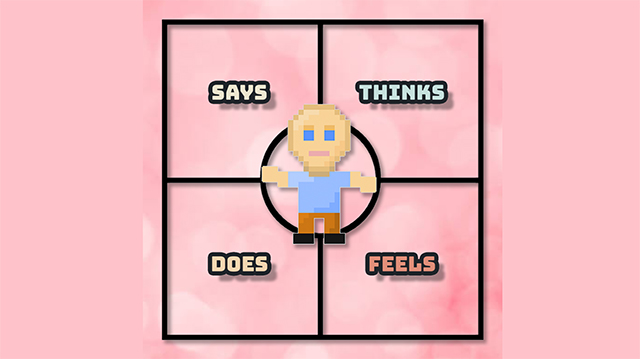
Around this time, Delventhal attended a conference and saw Danielle Krettek, the head of Google’s Empathy Lab, give a talk. The goal of this lab is to use empathy to improve Google’s products and AI, which is where he encountered the aforementioned empathy mapping. Delventhal claims that game developers need to spend more time empathizing with their users in order to better understand what they want. Exploring the other non-verbal parts of the issue are where creators can hone in, do some research, and get to the emotional core to solve the deeper problems. Mapping out the “do,” “think,” “feel,” and “say” is helpful since this lays everything out so a designer can use empathy to tackle problems that users themselves maybe can’t describe.
But cats can’t talk, which limits how Mew and Me can take from the four parts of empathic design. So this pushed Delventhal to a point where he had to dig in and do some cat research. In doing so, he found out that cats are semi-colorblind, can see in 60 frames per second, and have poor vision within a foot from their face which explains why they focus on motion for seeing. This inspired him to change the game a bit, which caused some of the tested cats to engage with the game a bit more.
However, the cats kept swiping and missing their digital prey. And while failing to hit their targets was what they were “doing,” they were essentially “saying” that they couldn’t see exactly what they were trying to hit. Breaking down the “saying” is where the problems can be addressed and this is where the team overhauled the art style and upped the contrast, making the targets easier to spot.
These changes were effective as 18 of the 42 cats were actually “playing” the game and not just staring at it. By using empathic design, Delventhal was able to not just look at what the cats were doing, but allowed him to look beneath the surface and figure out that they couldn’t see to better address the problem.
Finding the purrfect solution
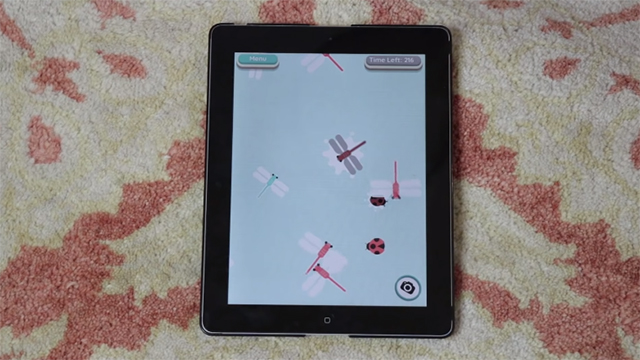
This lesson translated to how Delventhal developed the human part of the game. Cats batting at mouse JPGs is only half the experience as owners are meant to look at the data the game tracks such as the cat’s favorite game or active hours. One owner, in particular, stated that the data was “neat” but something was missing, which caused Delventhal to examine how she was feeling because she wasn’t doing a great job at succinctly conveying her real problems with it. Using empathic design, he deciphered that she was actually missing her cat and that led him to a revelation: he was selling an intellectual, data-driven product to emotional people. And not just cat people are emotional; almost all people are.
He determined that cat owners left this game running on their tablets because they felt guilt from leaving their pet alone. That guilt was the emotional hook he’d been trying to uncover and where looking beyond the words helped out. So, in order to address that, Delventhal implemented the ability to track the cat’s paw movements like finger paintings and send those to the owner while they were away as well as pictures of the cat from device’s camera. And it worked as engagement and usability increased across the board in the game’s beta.
Learning how to identify nonverbal communication allowed him to get at that unspoken or unarticulated core of the problem most times, which is something other game designers can and should learn from. Delventhal claims that understanding and learning your audience is key to solving their problems and that empathy mapping forces you to get deeper in a simple, understandable way; a skill he had to hone in order to understand speechless animals. According to him, developers should “spend the time to understand [their] user and not just talk to them” and if that can work on a bunch of stubborn cats, then it can probably work on a bunch of stubborn people who play video games.
Image Credit: Mew and Me
